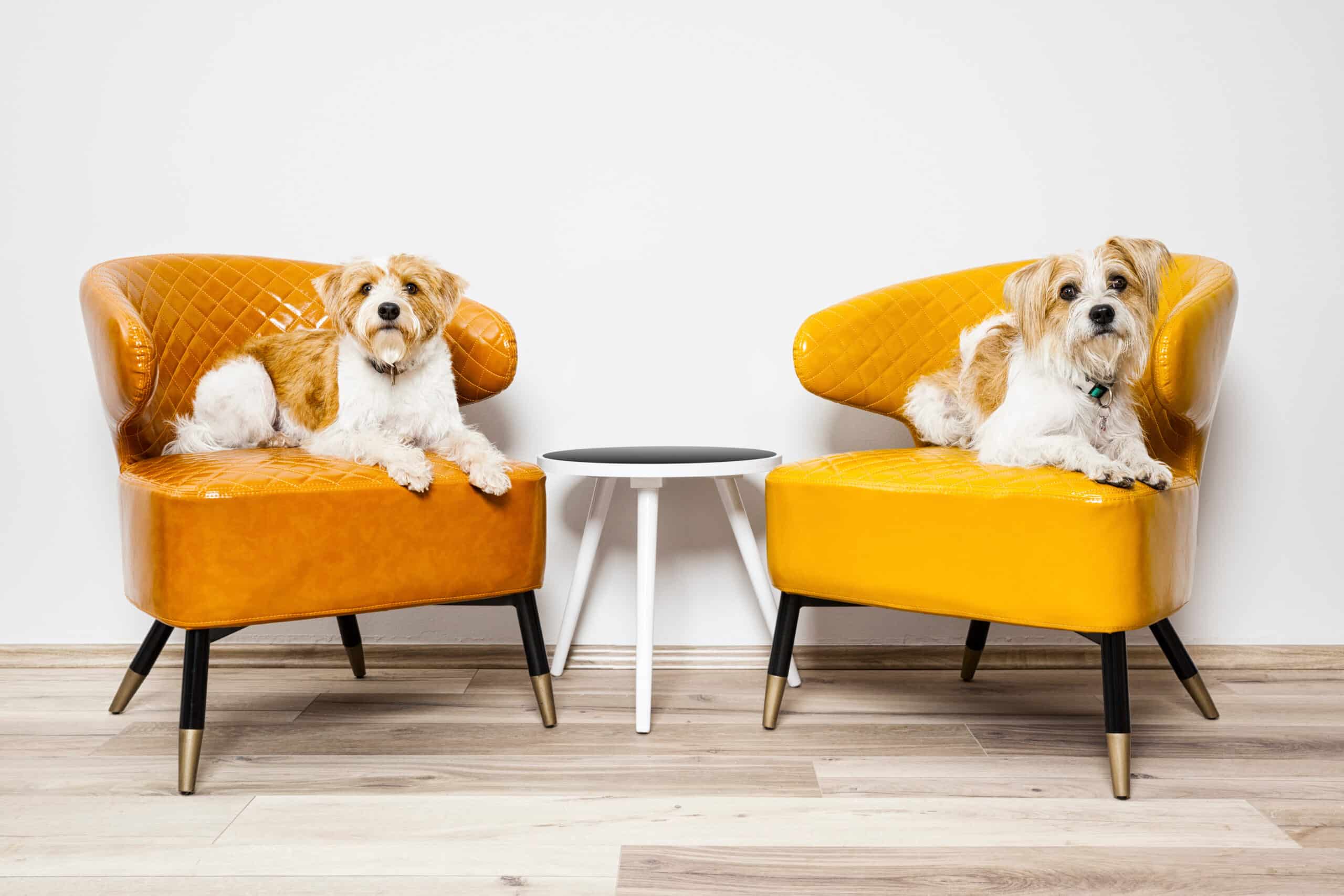Dogs, often referred to as “man’s best friend,” have been an integral part of human history for thousands of years. This remarkable journey of companionship, loyalty, and partnership stretches back to ancient times and has left an indelible mark on cultures worldwide. From their early domestication to their diverse roles in societies, the history of dogs is a testament to the enduring bond between humans and animals.
The Origins of Canine Domestication
The story of dogs begins long before recorded history. Genetic evidence suggests that domestication likely began more than 20,000 to 40,000 years ago, making dogs one of the first animals to be domesticated by humans. The exact process and location of this domestication are subjects of ongoing research and debate.
One prevailing theory suggests that the domestication of dogs started when wolves, attracted to human settlements by the availability of food scraps, formed a mutually beneficial relationship with early humans. Over generations, these wolves evolved to become more tolerant of human presence and began to assist humans in various tasks, such as guarding campsites and helping with hunting.
Dogs in Ancient Cultures
As human societies developed, dogs took on various roles that reflected the needs of their human counterparts. In ancient Egypt, dogs were revered for their loyalty and protective instincts, often depicted as symbols of fidelity and vigilance. They were associated with Anubis, the jackal-headed god of mummification and the afterlife.
Similarly, ancient Greeks and Romans held dogs in high regard. Greek mythology featured the faithful hound Argos, who recognized his long-lost master Odysseus after years of absence. Romans, on the other hand, employed them as guards, herders, and even in military roles.
In East Asia, dogs played important roles in cultures like the Chinese and Japanese. Chinese folklore includes stories of loyal and mythical dogs like the “Fu Lions,” which were believed to protect homes from negative influences. In Japan, the Akita breed is revered for its loyalty and is associated with the story of Hachiko, a dog that faithfully waited for its deceased owner at a train station for years.
The Evolution of Dog Breeds
Throughout history, humans selectively bred dogs for specific traits and purposes, leading to the incredible diversity of dog breeds we see today. The process of selective breeding accelerated during the Victorian era in the 19th century when dog shows gained popularity, and breed standards were established. This period saw the formalization of breeds like the Bulldog, Poodle, and many others.
Dogs were bred for various purposes, such as herding, hunting, guarding, and companionship. The Border Collie, known for its exceptional herding abilities, emerged in the British Isles. The German Shepherd, with its intelligence and versatility, was developed for herding and later gained prominence in police and military roles. Breeds like the Greyhound showcased the incredible speed and agility that made them effective hunters.
Dogs as Working Partners
As civilizations progressed, dogs solidified their roles as indispensable working partners. For instance, the Newfoundland breed was celebrated for its water rescue capabilities, saving countless lives at sea. St. Bernards, famous for their mountain rescue work, aided stranded travelers in the treacherous Alps.
In urban areas, dogs found employment in unexpected fields. Ratting terriers helped control rodent populations, while draft dogs assisted with hauling goods in carts. Their loyalty, intelligence, and willingness to cooperate made them vital assets in both rural and urban settings.
Dogs in Warfare and Service
Dogs have also played significant roles in warfare and service. Ancient armies utilized dogs for sentry duty and as scouts due to their keen senses. In more recent history, dogs were employed during World War I and II for various tasks, including delivering messages, detecting mines, and providing comfort to soldiers on the front lines.
The modern concept of service dogs and therapy dogs has deep historical roots. Dogs have been trained to assist individuals with disabilities for decades. Guide dogs for the visually impaired and hearing dogs for the deaf are among the most well-known examples. Additionally, therapy dogs offer emotional support and companionship in settings such as hospitals, nursing homes, and disaster relief areas.
The Evolution of Dogs in Society
As societies evolved, so did the roles and perceptions of dogs. In the past, dogs were often seen primarily as working animals. However, with the rise of urbanization and changing human lifestyles, dogs gradually transitioned into companions and family members. This shift led to the emergence of the modern concept of pet ownership.
The 20th century witnessed a remarkable transformation in the way dogs were treated. The development of commercial dog food, advances in veterinary care, and the increasing humanization of pets all contributed to the changing relationship between humans and dogs. Dogs were no longer just tools for specific tasks; they became valued members of households, providing companionship, love, and emotional support.
The Science of Dogs: Genetics and Behavior
Advancements in science have further deepened our understanding of dogs. In recent years, studies in genetics have shed light on the evolutionary history of dogs and their relationships with wolves. Genetic research has also enabled the identification of breed-specific health concerns, allowing breeders to make more informed decisions to improve the overall health of dog populations.
Behavioral studies have explored the cognitive abilities and emotions of dogs. Research has shown that dogs possess a remarkable capacity to understand human gestures and expressions, leading to their success in roles such as service animals and therapy dogs. The strong bond between humans and dogs is believed to be rooted in the release of oxytocin, often referred to as the “love hormone,” during interactions between the two species.
The Modern Dog: Companionship and Beyond
Today, dogs continue to be cherished companions in millions of households around the world. From the tiny Chihuahua to the majestic Great Dane, there is a dog to suit every lifestyle and preference. Breeds that were once bred for specific tasks now excel in a variety of roles, from agility and obedience competitions to search and rescue operations.
The concept of dog breeds is continually evolving, with new breeds being recognized and existing ones adapting to changing societal needs. Additionally, the rise of crossbreeding and hybrid dogs has introduced new possibilities for combining desirable traits from different breeds.
Challenges and the Road Ahead
While the history of dogs is one of mutual benefit and partnership, it hasn’t been without challenges. Irresponsible breeding practices, puppy mills, and overpopulation have led to issues such as genetic health problems and high numbers of dogs in need of homes. Animal welfare organizations and responsible breeding practices are working to address these challenges and ensure the well-being of dogs worldwide.
In recent years, the concept of “adopt, don’t shop” has gained momentum, encouraging people to adopt dogs from shelters and rescue organizations rather than purchasing from commercial breeders. This movement aims to reduce the demand for puppy mills and promote the adoption of dogs in need.
The history of dogs is a testament to the enduring bond between humans and animals. From their early days as working partners to their present role as beloved companions, dogs have journeyed alongside us through the ages. Their unwavering loyalty, diverse capabilities, and adaptability have made them an integral part of human culture and society.
As we continue to learn more about the genetic, behavioral, and emotional aspects of dogs, our appreciation for these remarkable animals deepens. The shared history of dogs and humans serves as a reminder of the transformative power of companionship and the
incredible potential that arises when two species come together in harmony.
Kingwood Pet Sitting offers in-home pet sitting, doggy daycare, dog walking, drop-in visits, and more in the Kingwood, Texas area.
Book your pet’s reservation here





